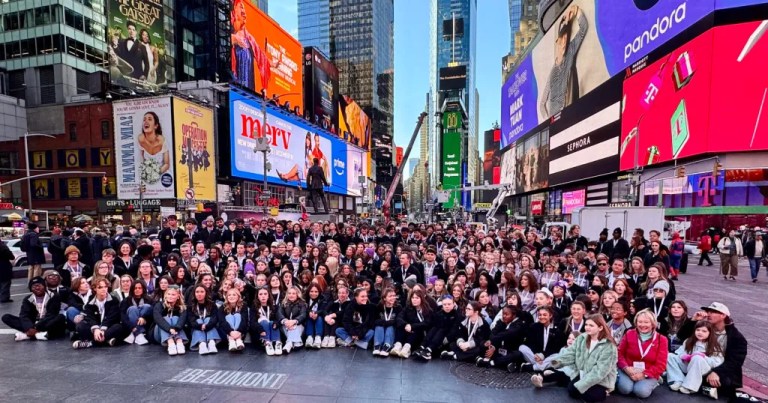Reviewed by: Patrick Byington
How Project Paperclip shaped Huntsville as we know it
Reading time: 4 minutes

Huntsville’s moniker as “The Rocket City” obviously comes from the city’s deep involvement in the birth of our country’s space program. But some may not know just how the influx of scientists and engineers for the program were recruited to the city.
Project Paperclip, a program aimed at bringing German and Austrian engineers, scientists and technicians to the United States after the end of World War II, was the catalyst for the space industry’s growth in Huntsville.
Project Paperclip transforms Huntsville into the Rocket City

Although Project Paperclip itself lasted less than two years, it became the catalyst for similar programs that continued until 1962. Ultimately, the initiative sparked the relocation of approximately 1,500 German and Austrian professionals and their families to the United States.
According to Britanica, these scientists were not invited without a screening process. The government guidelines required that “anyone who had been more than a nominal member of the Nazi Party was to be excluded.”
This requirement addressed concerns over security risks, but also brought in German scientists that were unable to find work post-World War II.
This is how the family of Huntsville native Hans Paul found themselves here, as his father was part of the group recruited to Huntsville. Paul said his parents moved to Huntsville in 1950.
“I most likely would not be in Alabama had it not been for Project Paperclip and Senator Sparkman moving a significant part of the Rocket Team to Huntsville.”
Hans Paul
Paul has fond memories of his childhood in Huntsville, recalling growing up on Locust street near Maple Hill cemetery and riding horses at the stables located nearby.
How Huntsville’s cultural makeup changed

Paul and his family were just one of thousands that came over due to Project Paperclip, and not only expanded Huntsville’s population, but changed the cultural makeup of the city.
“The Paperclip scientists affected Huntsville culturally, economically and psychically. The Paperclip scientists pursued an immense dream, the ripple effects of which continue to impact Alabama and the world.”
Hans Paul
The pursuit of a moon landing brought more scientists overseas to Huntsville, and more engineers from all over the country here for the express purpose of building the U.S. Space program.
This brought in new perspectives, new cultures and new ideas to the community, Paul said.
“The infusion of fresh ideas into rural Alabama changed people’s realization of what was possible. The attraction of that work force and engineering talent in turn released entrepreneurial activity which continues to iterate with the attraction of more engineers and employers in pursuit of big dreams.”
Hans Paul
By the time Werner von Braun’s group was moved to Redstone Arsenal in the 1950s, Huntsville became the heart of the Army’s nuclear-armed ballistic missile development.
According to a report from the Smithsonian’s Air & Space Museum, von Braun “made himself world-famous by advocating spaceflight in magazines and on TV.”
“After the Soviets launched Sputnik in October 1957, he and his German-led group, now numbering in the thousands (almost all native-born Americans), helped launch the first United States satellite, Explorer I.
In 1960, von Braun’s division of the Army Ballistic Missile Agency was transferred to a new civilian space agency, NASA. The Huntsville Germans, most naturalized in 1954-1955, went on to lead the development of the Saturn rockets that put Americans on the Moon in 1969.”
Michael Neufeld, Smithsonian Institute
How much impact did Project Paperclip have on the population of Huntsville? Well, in 1940, the population of the Huntsville metro was 13,180. By 1970, the population had grown 10-fold to more than 139,000.
Today’s continued population boom can still be attributed in large part to the space program.
Do you have memories of the early days of the space program? Let us know on Facebook, TikTok, Threads and Instagram, and be sure to subscribe to our newsletter.



